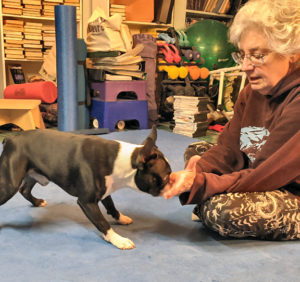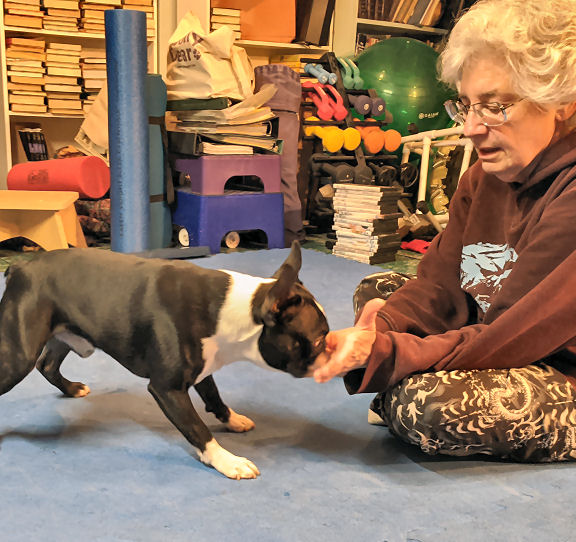How do you get your dog’s head in the game? When it’s time to play training games, do you have a regular time and place? Do you put your dog’s collar or harness on? How do you let your dog know it’s time to go have some fun?
You already know that dogs love routines and schedules. You can bet that if you follow the same routine every day, your dog will know when it’s time to play. And if it doesn’t happen, they’ll probably let you know they’re not happy about it.
But what if your life’s schedule doesn’t allow for a regular training “date” with your dog? You can still use a routine to get your dog’s head in the game.
Start with a warm-up game
While two minutes is a great, intense training session, it’s more of a guideline than an absolute. There are games, especially those with some set-up and complex behavior chains, that are better if you play a bit longer. Other training games, once you and your dog know them, are great to play for a minute or less – like a warm-up to the main event.
Use those quickie games to start every session and get your dog’s focus on playing with you. Most of our group classes start with a timed minute of Puppy Pushups. Just that fast, random calling of “Sit!” “Stand!” and “Down!” gets your dog’s attention. The faster you play, the more rewards your dog gets, the better engagement you’ll get. It may be just an opener to the main act, but that doesn’t mean it has no value.
If your dog is accustomed to performing familiar behaviors quickly, they don’t even have to think about it. When you say “Sit!” your dog’s butt will hit the floor fast. Likewise with “Down!” and “Stand!” If you ever do intend to indulge in dog sports like Obedience and Rally, it’s wonderful if neither of you has to worry about those commands. As soon as you say it, your dog won’t even have to think. They’ll automatically do it, just like when you play your Puppy Pushups game.
Keep them fresh

Using the most useful games as part of your speedy warm-up will keep them front of mind for your dog. You’ll be able to use them when you most need them. “Touch!” can be a warm-up. It’s also the one you want to keep fresh when you spot the squirrel before your dog does. Or the guy comes into the veterinarian’s waiting room with a cat in a carrier. Those little training games are useful, even if you never plan on a dog sport career.
One of the many reasons to play daily training games with your dog is to make life easier. Both of you will react better if you have a fall-back to rely on in stressful situations. If it’s an ingrained habit to play “Touch!” you’re more likely to remember it when you need it. After all, habit is the most powerful force in the universe.

